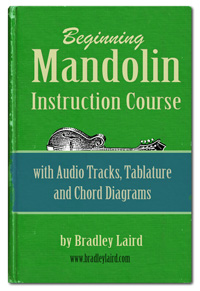|
HOME | FREE MANDOLIN CHORD CHARTS | FREE VIDEO LESSONS | FREE PODCAST FOR STUDENTS FREE BEGINNING MANDOLIN LESSONS | FREE MANDOLIN TABS | BRAD'S eBOOKS
|
||||||||||||||||||||||||||||||||||||||||||||||||||||
How
can I help you if you never visit...
©2016 Bradley Laird |
FREE MANDOLIN CHORD CHARTS from Bradley Laird When using the chord charts provided, which are grouped according to a particular key, it is a good idea to practice changing from one chord to another in an order which you are likely to encounter in real songs. A good way to practice this is to choose a key and then play the following chord progressions: I - V - I I - IV - V - I I - II - V - I I - IIm - V - I I - VIIb - I - V - I I - VIm - IV - V - I I - IIm - IIIm - IV - V - VIm - I I - VI7 - II7 - V - I
Obviously I am using Roman numerals to designate the order of the chords. Remember that the relationship, in terms of musical distance, from a I to a IV chord is the same in EVERY KEY! Yes, the letter names change as you move from one key to another, but the relationship remains the same. I think it helps speed the progress of musical understanding by making an effort to understand the concept of "chords by the numbers" at an early point in your studies. If you want to dive into more of this thought I invite you to take a look at my book "Mandolin Master Class". The progressions shown above do not in any way indicate the timing or rhythm of a song. They simply tell you the order in which the chords appear. You might play the I chord for four beats, then followed by one beat of a IIm chord, etc. When beginning I think it is a good idea to practice each progression by playing 4 beats per chord. You can simply count "1-2-3-4" and strum each chord 4 times before moving to the next chord. Go slow enough that you can make the chord change without stopping the beat. LOOKING AT A REAL SONG AS AN EXAMPLE Here I will repeat the chord symbols once per beat so that you can see how many beats you play per chord. This is the chord progression for the song "Devil's Dream", a common old time fiddle tune often played on the mandolin: DEVIL'S DREAM -as Roman Numerals
Most players play Devil's Dream in the key of A, so if you consult the Key of A chord chart you can convert each Roman numeral to a letter name if you like. Here is the same song displayed as chord letter names: DEVIL'S DREAM - as Letter Names
As an exercise, and a self-test, take a look at the chart for chords in the key of D and fill in the blanks here by converting the song "Devil's Dream" into the key of D. I'll give you the I chord... since that is the key we are in:
That process of converting a chord progression into another key is called "transposing". And by the way, in case you are wondering how to tell what key a song is in, you can rely on this simple rule which works in 99% of all songs. To determine what key a song is in, simply look at the last chord of the song. Songs almost always end on the chord of the key they are in. They don't always start on that chord but they almost always end there. For example: If you see a song that ends on a C chord you can bet money that the song is in the key of C. A song that ends on a G chord is 99% sure to be in the key of G. Here are the chord progressions to two common bluegrass tunes to look at as examples: John Hardy Chord Progression (duration not indicated... just the order.) C G C G C G D G That song is in the key of G. It ends on G so it is most likely in the key of G. (In fact, it 100% is!) Songs tend to "resolve" to the home chord (the I chord) at the end. Here is another song, Worried Man Blues in the key of A: Worried Man Blues Chord Progression A D A E A Worried Man is an example of a song that begins and ends on the I chord. In this case, I is an A chord. 95% of all songs do this--they start and end on the same chord, but some do not, like John Hardy shown above. So, the safe rule is to look at the last chord and that will tell you what key you are in. Note: Songs in minor keys (say, a song that ends on Em) are a little more complex to understand, but the same ending chord rule applies. If it ends on Em it is most likely in the key of Em. I haven't organized the chord charts according to Minor Keys but I plan to write some lessons discussing that at some point in the future. You see, there are really several parts of your "self" which you must train as you learn to play music. One part is the physical side of learning to "do" (how to make chords, strum, pick the strings, etc.) and another part, equally important, is to "know" (understanding music, training the mind.) Always strive to improve both sides of your "self" and you will progress more rapidly and enjoy playing more.
|
|||||||||||||||||||||||||||||||||||||||||||||||||||




